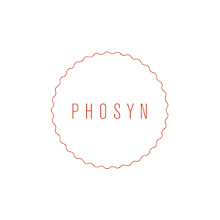My project called “Visual Victims” is definitely one of the biggest photographic projects I ever worked on. I was working on it for about a year which makes it also the longest project I ever did. My research was mostly based on the experience of new people, places and situations as well as collecting visual examples of what the project is/could be about . On top of that I tried to find as many written publications on the subject matter as possible, however it wasn't an easy task as it isn't a typically academic subject.
From the very beginning I knew that I want my final major project to talk about something that is important to me but in the same time something that is universal enough so that anyone can relate to it. I also knew that it is going to be somehow related to fashion photography. I also wanted it to be a summary of all the experiences I had throughout the course and how it defines my point of view and me looking at the industry I am just about to become a part of.
Choosing hipsters as my main subject wasn't a calculated and very controlled decision. I think it was more about me being under the influence of this phenomenon and me being overwhelmed by it.
Ever since I first went to New York and realized how strikingly similar their “alternative scene” is to what we have in London, I knew I will be interested to know more about. After that, there was my internship at Spring Studios, exchange in Canada where I had an opportunity to travel to places like Detroit, Montreal and Vancouver Island and finally my meeting with photographer Chadwick Tyler.
All those things made a very strong impact on me and my work. Even though I couldn't really name the connection in between them straight away I knew that my project has already started and that all those experiences will be eventually turned into photographs.
Symposium and all the research I made for it helped me a lot to come up with some definitions which then helped me to communicate my ideas to other people. I could finally start defining what my project is about and how I am going to turn it into images. Unfortunately there were only two months in between the symposium deadline and the deadline for the practical project which I found was a very very short time.
Anyway, as I mentioned before I knew straight away that I will try and produce something which in style of fashion editorial. It was a very difficult and risky move as my subject is essentially a sociological phenomenon. Presenting it as a fashion piece, rather than documentary, was a challenge. But there were a few reasons why it was so very important for me to stick to the fashion photography up until the very end of my degree;
First of all this is the type of photography I am most interested in and this is what I want to do professionally so I wanted to make sure that my final project is a clear message about my style of work and my interests. Moreover, I found it much more challenging and stimulating this way. It would be much easier for me to create a documentary about hipsters and their influence on the fashion/photography. But that wasn't the point.
Secondly, sticking to fashion rather than art or documentary photography, was the biggest challenge for me throughout the course. The environment we worked in for those three years was heavily influenced by art and documentary photographers. There wasn't a project (including this one) or a time when I wasn't given at least a faintest hint to drop the fashion style and go for something more like documentary or art project.
But in the end I found it very stimulating as I always had to work my ways through things that are much different from what typical fashion photography is. It also made me very determined and very assured of my interests. What is more, it gave me a different perspective and showed me different ways of working which I hopefully will be able to apply the fashion industry and focus on those elements that bring it closer to an art form and pure creativity.
And that is the quintessence of my project. It is definitely one of those times when it is much more about the journey than about the destination. My project is a summary of everything that these three years meant for me; everything I learnt,everything I experienced and everything my photography became in that time.












